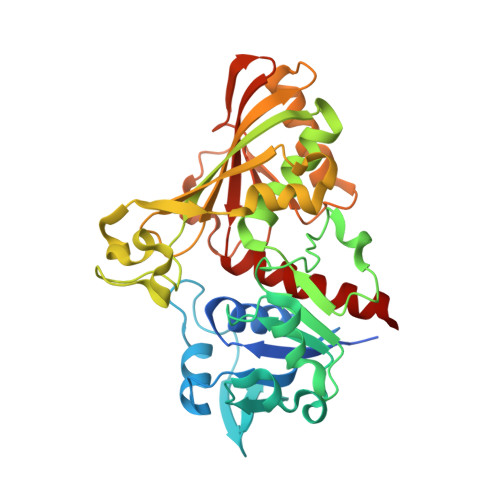Membrane skeletal association and post-translational allosteric regulation of Toxoplasma gondii GAPDH1.
Dubey, R., Staker, B.L., Foe, I.T., Bogyo, M., Myler, P.J., Ngo, H.M., Gubbels, M.J.(2017) Mol Microbiol 103: 618-634
- PubMed: 27859784
- DOI: https://doi.org/10.1111/mmi.13577
- Primary Citation of Related Structures:
3STH - PubMed Abstract:
When Toxoplasma gondii egresses from the host cell, glyceraldehyde-3-phosphate dehydrogenase 1 (GAPDH1), which is primary a glycolysis enzyme but actually a quintessential multifunctional protein, translocates to the unique cortical membrane skeleton. Here, we report the 2.25 Å resolution crystal structure of the GAPDH1 holoenzyme in a quaternary complex providing the basis for the molecular dissection of GAPDH1 structure-function relationships Knockdown of GAPDH1 expression and catalytic site disruption validate the essentiality of GAPDH1 in intracellular replication but we confirmed that glycolysis is not strictly essential. We identify, for the first time, S-loop phosphorylation as a novel, critical regulator of enzymatic activity that is consistent with the notion that the S-loop is critical for cofactor binding, allosteric activation and oligomerization. We show that neither enzymatic activity nor phosphorylation state correlate with the ability to translocate to the cortex. However, we demonstrate that association of GAPDH1 with the cortex is mediated by the N-terminus, likely palmitoylation. Overall, glycolysis and cortical translocation are functionally decoupled by post-translational modifications.
Organizational Affiliation:
Department of Biology, Boston College, MA, 02467, USA.


















